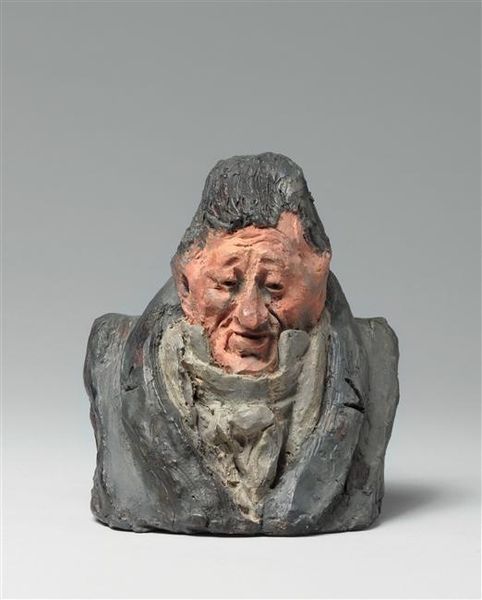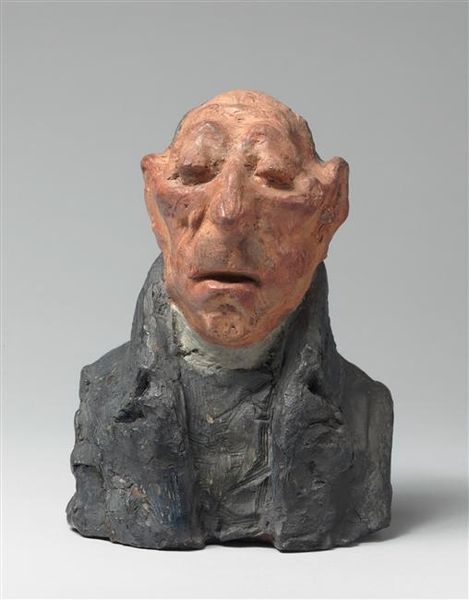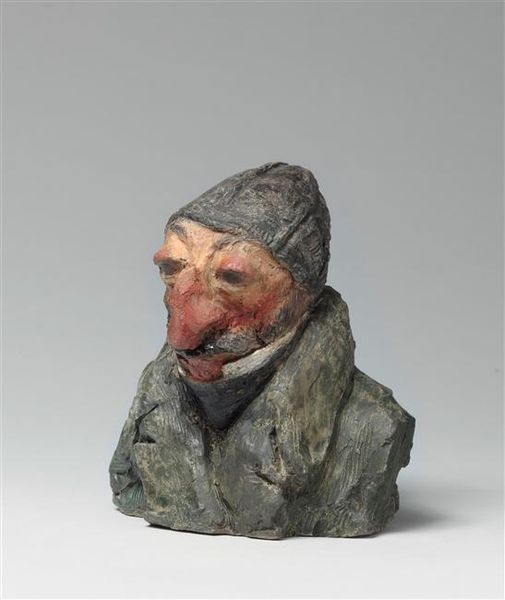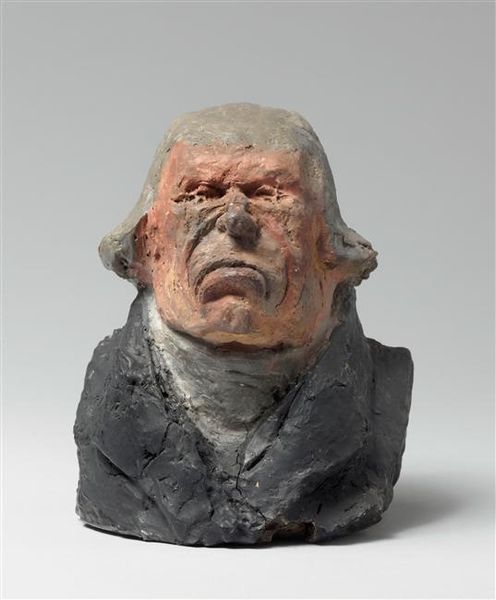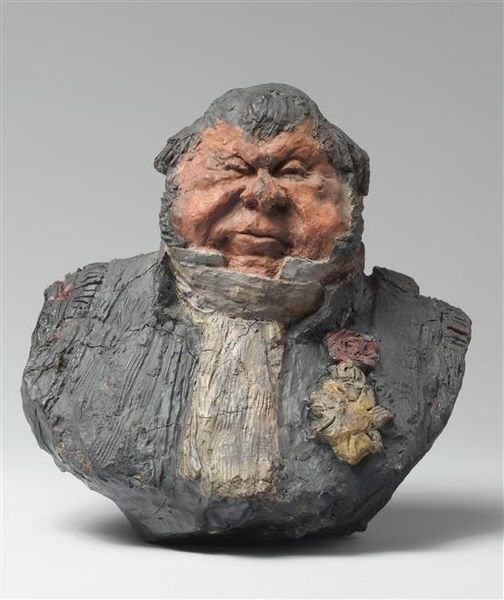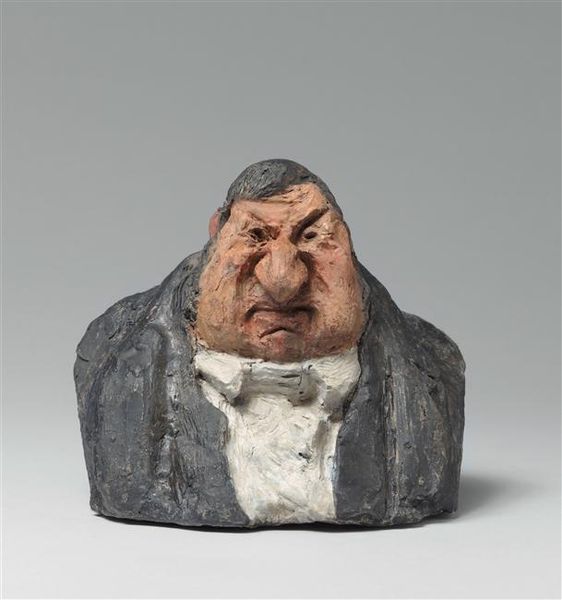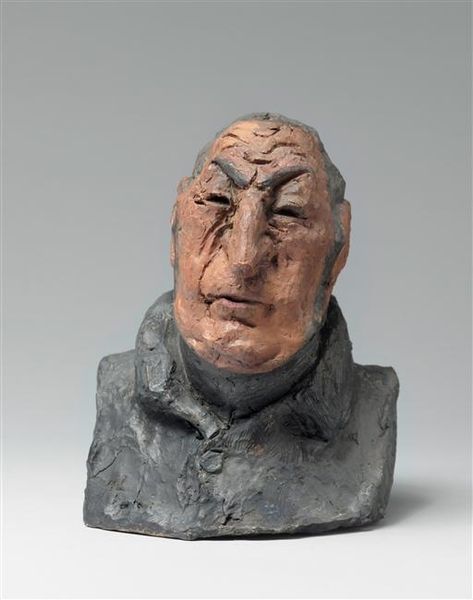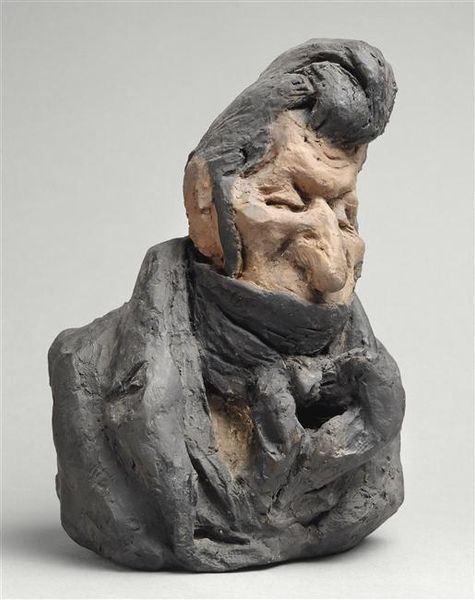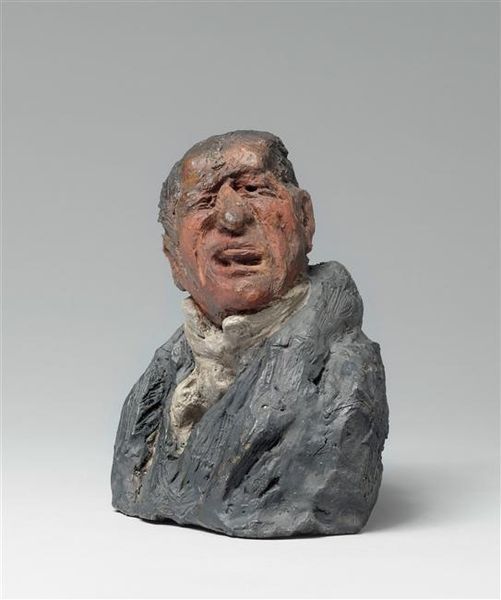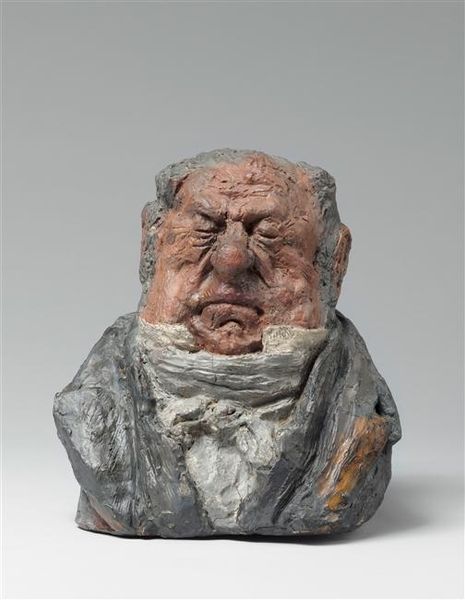
ceramic, sculpture
#
portrait
#
sculpture
#
ceramic
#
figuration
#
sculpture
#
romanticism
Copyright: Public domain
Honoré Daumier sculpted this painted clay bust of Charles Guillaume Etienne, a French politician, in the 1830s. Daumier, a Republican, was committed to using art as a means of social critique, at a time when caricature was emerging as a powerful tool for political commentary in France. Through satirical portraits like this one, Daumier challenged the authority of France’s political elite. Note the exaggerated features, like his closed eyes and smug expression. This was a visual language that held politicians up for ridicule, a sentiment popular in the 1830s. France was governed by Louis-Philippe, a so-called “citizen king,” who was seen by many as betraying the ideals of the French Revolution. Publications like *Le Charivari*, for which Daumier worked, captured this mood. To better understand Daumier’s political caricatures, research the journals and pamphlets that circulated in Paris during the July Monarchy. These sources offer insights into the social and political context in which Daumier worked, and they help us understand how art can challenge existing social norms.
Comments
No comments
Be the first to comment and join the conversation on the ultimate creative platform.
